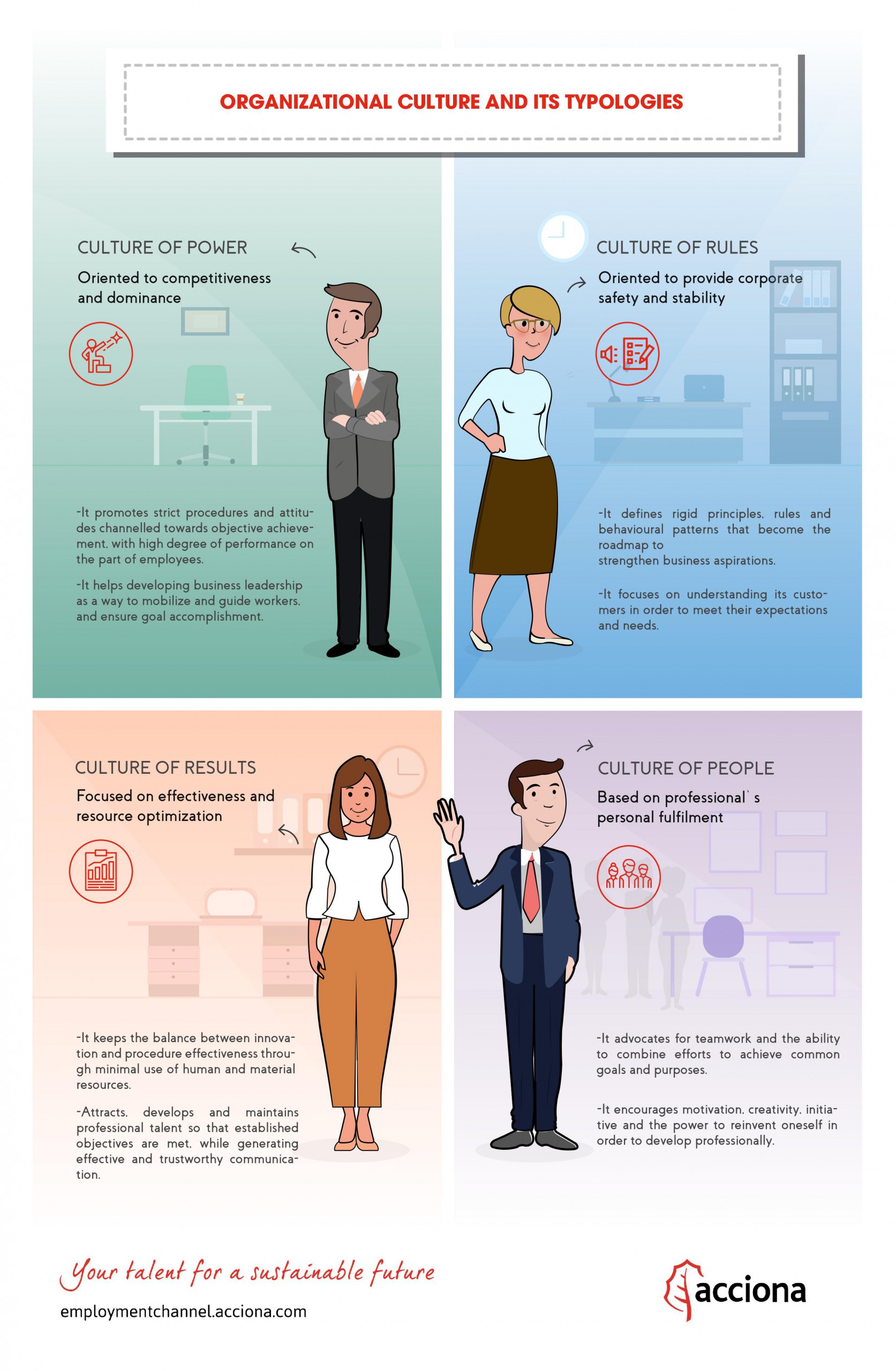Defining the basic aspects of an organization’s business management model is becoming one of the main objectives for those companies betting on constant update and renewal. This conglomeration of ideas combines under the increasingly used umbrella of organizational culture, a key factor both in innovation processes inside an organization and the direction towards change must be headed.
Broadly speaking, the concept of organizational culture could be defined as the general atmosphere in the workplace and the attitudes of the people there. It is, in short, the collection of mindsets, behaviours and feelings shared by the staff members of every organization, and it is comprised of everyday elements such as flow of communication, the way decisions are made, how resources, values and rules are managed and the degree of flexibility to implement them, willingness to take risks and accept its consequences or leadership styles, among many other variables.
In other words, it’s a powerful tool for any company whose goal is to promote changes and introduce new ideas or methods regarding business management. It may be stated, almost certainly, that organizational culture is what makes each company unique and different to the rest.
Creating an organizational culture
Interest in this corporate culture is relatively recent, since until the mid-1980s organizations were considered as means through which groups of people were coordinated and monitored. However, this concept emerges in order to defend the notion of corporations having personalities very different from each other, allowing them to shine in their own right.
That’s why its management is a key element in a modern, ever-changing environment. Companies must have tools at their disposal to identify and manage that culture in order to become competitive organizations, on the search for customers who can relate to the values and demeanour they champion.
There are five actions that every company must take into account when creating and maintaining the culture they want to be associated with. The first one is to define the type of culture to implement, followed by the setting-up of corporate behaviour and the improvement in communication processes. The fourth one is focused around coherence between words and deeds, and the last one addresses the need to devote more time to employee selection and recruitment.

Organizational culture typologies
There are plenty of organizational culture models, and as many ways to categorize them. However, the classification proposed by Harvard Business Review’s Roger Harrison is the most accepted and popular, since it defines four different cultural orientations according to corporate goals and values associated to them.
- Power-oriented organizations, whose main focus is business competitiveness. Their values are headed towards reinforcing their dominant position in the market, so decisions are usually made by an autonomous top executive with command over employees.
- Rule-oriented organizations, based on ensuring safety and stability in the company. They’re devoted to the strict observance of rules and responsibilities in each job position, as well as the proper operation of procedures and processes.
- Result-oriented organizations, whose objective is to be more effective and carry out optimal process development. They bet on cost reduction and accomplishment of business goals in short periods of time, with the highest degree of efficacy possible. This is what makes companies more competitive in increasingly complex business environments.
- People-oriented organizations, which advocate for personal fulfilment for their staff members through professional development and motivation, encouraging their creativity, implication and satisfaction. Employees are the core of activity, since they’re the most important asset of the company. Thus, mutual help and interest is favoured eventually.
Nowadays, companies place their bet on models based on people and results, given their flexibility, while distancing themselves from strict cultures like those based on power and rules, which are increasingly becoming a thing from the past.
Sources: Harvard Business Review, EmprendePyme, Acsendo, Felicidadeneltrabajo.es

